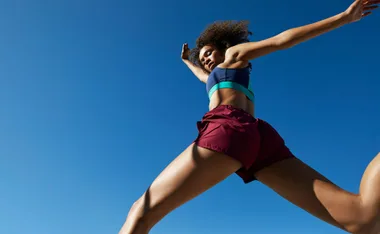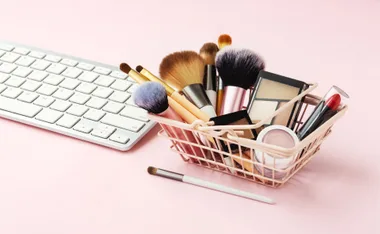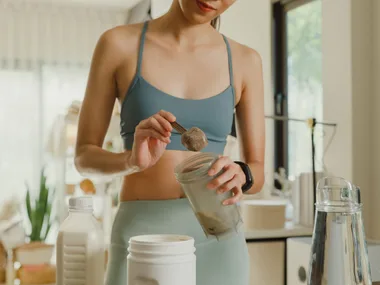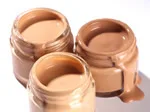Exclusive extract from Sparkles (Headline/Review) by Louise Bagshawe.
‘So,’ the lady said. ‘You have come at last.’
‘Just so, madame,’ said Sophie, nervously.
Her mother in law shook her head and made a little moue of annoyance with her thin lips.
‘Speak English, girl, for heaven’s sake,’ she snapped. ‘You were never any good at French.’
The maid was still hovering, pouring the tea, but Katherine Massot paid no notice. Of course she would snap at Sophie in front of a servant; in Katherine’s world, servants were invisible. They simply didn’t count.
‘I wanted you to understand my decision,’ Sophie said, trying to keep her voice from trembling. She had always been nervous of the older woman. There had never been any warmth from Katherine, not when she and Pierre were first married, not even when Tom had been conceived.
‘I can see your decision with my own eyes,’ Her paper-thin claw of a hand gestured angrily at Sophie’s dress. It was perfectly chic; Givenchy, gathered at the wast, falling to just below the knee, with a tailored jacket, and severe Christian Louboutin court shoes.
But the elegance didn’t matter today. The colour mattered. And the colour was black.
‘You are giving up on my son,’ the elder Mme. Massot said.
Sophie flushed. It was as close to emotion as she had ever seen Katherine come, and Sophie had no desire to hurt anybody. There had already been so much pain.
For a second she didn’t say anything. They sat together, silently, in the sumptuous parlor of the Dower House, the Earl Grey rapidly cooling in front of them in its bone china cups. Sophie wished she could bolt. The excessive richness of the Louis XIV furniture, the antique silk Chinese wallpaper, it all seemed oppressive.
‘I could never give up on Pierre. But it has been seven years.’
‘Seven years and two days.’
Sophie nodded. Of course she kept exact count; she was his mother.
‘We’ve heard nothing,’ she pointed out. ‘Not a word, not a sign.’
‘There were reports… that he was seen,’ Madame Massot said stubbornly.
‘We investigated all those,’ Sophie reminded her. ‘They came to nothing.’
She glanced outside and the tall, narrow windows of the eighteenth-century house. They afforded a beautiful view of the park, across the lake, all the way up to the main house, Chateau D’etoiles. The castle of the stars. Pierre’s house. And now hers.
‘If I had the slightest hope that he was alive…’
‘I have not the slightest doubt he is,’ the old lady said, fiercely.
‘Based on what?’ Sophie said. ‘Have you some new information?’
Oh, how she hoped she did. Then she would not have to go through with all this. Then she could retreat to the familiar comfort of the Chateau, and go on doing what she was good at, being Pierre’s patient, obedient wife, keeping the home fires burning, and their son’s hope alive.
Instead of having to face everything. Startling, but by no means ending, with Katherine Massot.
‘I have not felt it. When a man like Pierre dies, you know. You sense it. Men like him do not pass unmarked.’
She looked at Sophie scornfully, as though to ask, for the millionth time, what Pierre had been doing to unite himself to such a mouse.
‘I understand. It is a mother’s love,’ Sophie said.
The old lady turned away in a rustle of silk.
‘What do you know of love,’ she said.
‘I loved Pierre.’
‘I wonder,’ said her mother in law.
Sophie felt anger for the first time, but it was drowned out by her fear. Katherine scared her, she always had. It had taken weeks, months even, to screw up enough courage to do this. And of course, she would take whatever Katherine threw at her. In this, as in everything else, Sophie would behave as Pierre had demanded she do. With impeccable dignity; with the bearing Sophie hadn’t acquired by birth, but which she had been aping for so long it was now part of her.
And besides — this was Pierre’s mother. And she was in pain. Imagine if it were Tom, and I was hearing this from Tom’s wife, she thought.
‘This is a dreadful thing for you,’ Sophie said, kindly. ‘I hope you will come and see me in a few days. And Tom,’ she added, trying to sweeten the deal with the promise of a grandson. ‘He should be over from Oxford for the weekend.’
‘What does Thomas think of what you’re doing?’ Katherine demanded.
She pronounced the name in the French way, just to let Sophie know what Pierre would have wanted.
Sophie’s face paled a little.
‘He is very fond of his father. And, like you, he still hopes.’
‘He disapproves,’ Katherine said, triumphantly.
Sophie sighed. ‘It has been too long. It is time to put an end to it. As much for Tom’s sake as anything. He must learn to move on, to have his chance to grieve.’
Katherine stared at her, then gave her a brittle laugh.
‘You are naive,’ she said, ‘if you don’t think life gives one plenty of chances to do that.’
Sophie looked down. Naive. Stupid. Passive. Yes, well; she knew what Katherine thought, what they all thought. She, middle-class, uneducated Sophie Roberts, picked, against all likelihood, by the great Pierre Massot at 19, to be his wife. And the mother to his one child, thankfully, a son. What had she done, all these years, except learn to dress, and behave, and host parties?
She rose. ‘I had to inform you myself.’
‘Yes. Thank you for that,’ Katherine’s bony claw picked up the papers, neatly folded, and extended them towards Sophie. She reached to take them, but for a moment the old woman held onto them.
‘Amazing,’ she said. ‘You need only sign. And you will control eighty million euros.’
Sophie hesitated, then gently took the documents from her mother in law’s hand.
‘Pierre would have never wanted us to quarrel.’
‘And all you have to do to get them,’ Katherine said, as though she hadn’t spoken, ‘is declare that he is dead.’
‘Because he is dead,’ Sophie said, helplessly. ‘It’s been so many years.’
Katherine Massot sighed and turned her face away, as though she were just too weary to deal with Sophie any more.
Sophie waited a moment, then noiselessly rose, and left the house. Outside, on the raked gravel of the driveway, her car and driver were waiting. As he stepped out and opened the back door for her, and Sophie slid gracefully inside — knees together, ankles lifted in one catlike movement — she breathed out. Not so much in relief. There was too much to do for her to be relieved. But at least in respite. The car pulled noiselessly away, following the winding road back to the main house. It was late May, and a glorious spring evening, the warm, fading light bright with the promise of summer. The topiary hedges cast long shadows over the smooth lawns, and the lake sparkled brilliantly in the setting sun.
It was an evening very like that one just over seven years ago, when her husband, Pierre Massot, kissed her on the cheek and told her he had to see to some business in the city. Nothing important, he told her. He walked out of the front porch, and she never saw him again.
Newsletter conversion description. Get the latest in your inbox.











































.png?resize=380%2C285)
.jpg?resize=380%2C285)



.png?resize=380%2C285)










